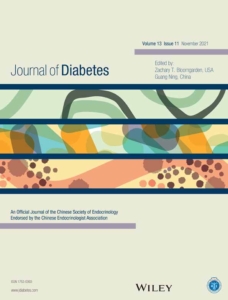Determinants of Incident Prediabetes and Type 2 Diabetes in a 7-year Cohort in a Developing Country: The Isfahan Cohort Study
Authors
Affiliations
Abstract
Background: This study aimed to identify determinants of new onset type-2 diabetes (T2D) and prediabetes in a region with high rate of T2D but scarcity of evidence.
Methods: Participants free of T2D were identified in a population-based study of adults older than 35 years living in the rural and urban areas of three districts in Iran in 2001 and were re-examined after 7 years. Biochemical measurements, anthropometric data, blood pressure, smoking status and dietary intake were determined at both measurement points through identical protocols and procedures. Data analysis was done using multivariate ordered logistic regressions.
Results: Incidence rate of prediabetes and T2D was 32.3 (95%CI, 29.7-35.1) and 18.9 (17.1-20.9) per 1000 person-year, respectively. Odds of progression to prediabetes and T2D were increased with ageing, living in rural area (OR = 1.28), unhealthy diet (OR = 1.32), overweight (OR = 1.45), obesity (OR = 1.97), waist gain (OR = 1.37), high waist-to-hip ratio (OR = 1.35), hypertension (OR = 1.35), and hypertriglyceridemia (OR = 1.50); but reduced with higher education (OR = 0.76) and weight loss (OR = 0.67) in the adjusted models. In those with prediabetes at baseline, parental history of T2D (OR = 2.26), obesity (OR = 2.59), high waist circumference (OR = 2.03), and hypertriglyceridemia (OR = 1.94) were associated with developing T2D. No factor was found to be associated with regression from prediabetes to normoglycemia in adjusted models.
Conclusions: Current data endorses proposed statistical projections for the future trend of diabetes, and highlights the potential role of obesity specifically visceral type.
Keywords: obesity; prediabetes; risk factor; type 2 diabetes
How to Cite
. 2015 Sep;7(5):633-41. doi: 10.1111/1753-0407.12236. PMID: 25350916.

